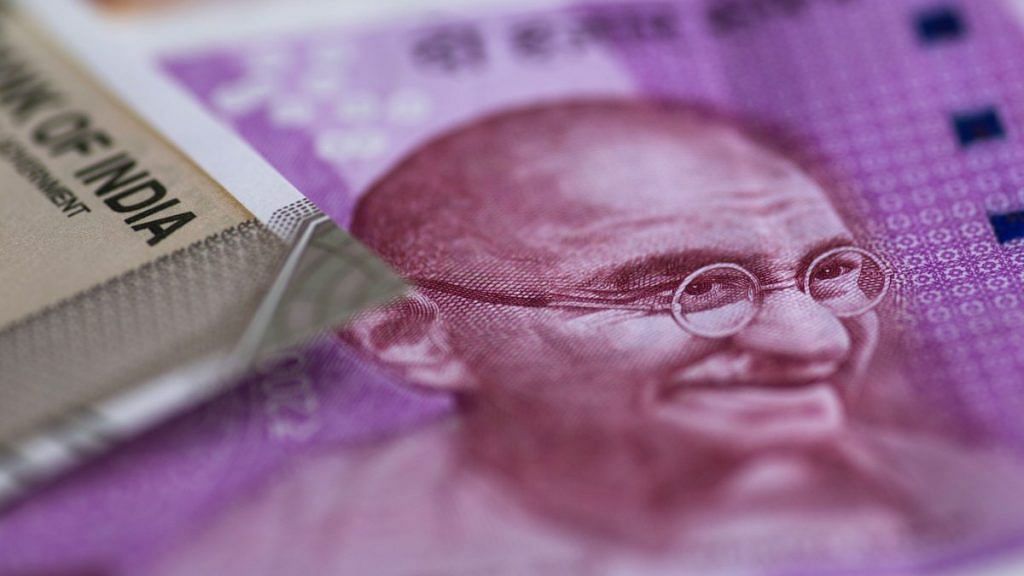New Delhi: The Narendra Modi government may have little option but to ask the Reserve Bank of India (RBI) to monetise a part of the fiscal deficit, at a time when Covid-19 pandemic is expected to adversely impact growth and consequently all revenues, many economists and political commentators have said.
India’s economy is expected to grow at less than 5 per cent in 2019-20 and at 2 per cent or less in 2020-21 due to a complete halt in economic activity as India tries to prevent the spread of Covid-19. The pandemic has meant a sharp rise in government expenditures even as revenue collections plunge, exerting pressure on an already rising fiscal deficit.
ThePrint explains what monetisation of deficit means.
Monetising the deficit
In simple terms, monetising fiscal deficit means the RBI purchases government debt directly rather than the government borrowing from the markets by selling bonds. In turn, the central bank prints more currency to finance this debt. This increases the money supply in the economy leading to inflationary pressures.
Also read: Shaktikanta Das assures RBI will use any necessary means to preserve financial stability
When did India stop monetising its deficit?
Historically, India’s deficits were automatically monetised. This was done through issuance of 91-day non-marketable ad-hoc treasury bills to the RBI which in turn increased reserve money.
Attempts were made since the late 1980s and early 1990s to gradually stop monetisation of the deficit. The government and the RBI, through two agreements, signed in 1994 and 1997 agreed to completely phase out funding through these ad-hoc treasury bills.
To ensure fund flow to the government, a system of ways and means advances was introduced in 1997 that allowed the RBI to give short term advances to the government that were completely payable in three months.
Despite the two agreements that were signed, the RBI still continued to subscribe to the primary issuances of public debt when the issuances were not fully subscribed to in the market. However, with the enactment of the Fiscal Responsibility and Budget Management (FRBM) Act, 2003, this practice was stopped.
Also read: Covid-19 hits Modi govt budget, Q1 expenses capped to save funds to fight the virus
What does the FRBM Act say?
The FRBM Act was enacted during the tenure of the Atal Bihari Vajpayee government as the final step towards phasing out monetisation of debt. The Act barred the RBI from participating in primary issuances of government securities from 1 April 2006.
“The Central Government shall not borrow from the Reserve Bank of India,” the Act said. This was part of the efforts to reduce the fiscal dominance of monetary policy in India.
How is monetisation of deficit possible now?
The FRBM Act provided an escape clause and said the RBI could subscribe to the primary issue of central government securities in case the government exceeds the fiscal deficit target on “grounds of national security, act of war, national calamity, collapse of agriculture severely affecting farm output and incomes, structural reforms in the economy with unanticipated fiscal implications, decline in real output growth of a quarter by at least three per cent points below its average of the previous four quarters”.
The deviation allowed in the Act was 0.5 percentage points.
Finance Minister Nirmala Sitharaman had invoked this escape clause much before the Covid-19 pandemic. In her budget presented on 1 February 2020, Sitharaman had raised the fiscal deficit for both 2019-20 and 2020-21 by 0.5 percentage points to 3.8 per cent and 3.5 per cent, respectively.
After the government’s decision to invoke the escape clause, RBI governor Shaktikanta Das at a press conference in the first week of February had said that there were no plans to monetise the deficit.
To be sure, much has changed in the two months since then.
Also read: Govt package a relief measure, tax-break stimulus ideal to fight Covid: RBI panel member
